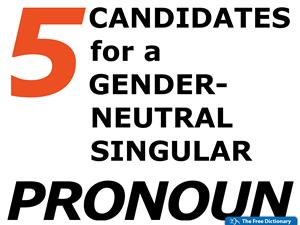Adverbs
What is an adverb?
An adverb refers to any element in a sentence used to modify a verb, adjective, another adverb, or even an entire clause.
Adverbs can be single words, as in:
- “You write beautifully.”
- “He slowly walked towards the bus.”
- “He owns the bright red car.”
They can also be phrases (called adverbial phrases) or entire clauses (called adverbial clauses). For example:
- “She ran very quickly so as not to be late.” (The adverbial phrase very quickly modifies the verb ran.)
- “The cat lives in the shed.” (The adverbial prepositional phrase in the shed modifies the verb lives.”
- “She looked excited, as if she could jump up and dance at any moment.” (The adverbial clause as if she could jump up and dance at any moment modifies the independent clause She looked excited.)
Single-word adverbs, adverbial phrases, and adverbial clauses are sometimes grouped together under the umbrella term adverbials, which simply means any word or group of words used as an adverb in a sentence. However, because the term is so broad in meaning, it is very common to simply call any adverbial element an “adverb.”
Categories of Adverbs
There are many different categories of adverbs, which provide specific kinds of descriptions and which behave slightly differently in a sentence.
The table below provides a quick breakdown of the different categories and how they are used to describe something in a sentence. Go to the sections of each individual category to see more examples and learn more about how they are used.
(Note that most of the examples below are single-word adverbs. However, adverbial phrases—and sometimes adverbial clauses—can also belong to each category.)
Category of Adverb | Function | Example adverbs | Example sentence |
|---|---|---|---|
Describe when or for how long something happens or is the case. | now, tomorrow, yesterday, still, yet, later | “We are eating now.” | |
Describe how frequently something happens or is the case. A subset of Adverbs of Time. | always, usually, sometimes, often, rarely, daily, weekly, monthly | “I rarely eat breakfast in bed.” | |
Describe the direction, distance, movement, or position involved in the action of a verb. | north, everywhere, here, there, forward, downward, up, uphill, behind | “I absolutely hate running uphill.” | |
Describe how something happens or how someone does something. Usually formed from adjectives. | beautifully, wonderfully, slowly, deliberately, happily | “He walked slowly toward the bar.” | |
Describe the intensity, degree, or extent of the verb, adjective, or adverb they are modifying. | undoubtedly, truly, very, quite, pretty, somewhat, fairly | “I'm fairly certain this is correct.” | |
Describe why something happens or is the case. Single-word adverbs are usually conjunctive adverbs. | therefore, thus, consequently, hence | “We’ve never seen such high numbers. We must therefore conclude that the results are not normal.” | |
Used to draw attention to a particular part of a clause. | also, exclusively, just, mostly, notably, primarily | “They played mostly techno music at the party.” | |
Used to modify the meaning of a verb, adjective, other adverb, or entire clause in a negative way. Used in many of the other categories above. | no, not, hardly, barely, never, seldom | “He does not work on Mondays.” | |
Used to connect independent clauses and describe the relationship between them. | comparatively, therefore, also, however, moreover, similarly | “Jen is terrible at math; however, she still likes it.” | |
Used by the speaker to comment or give an opinion on something. Evaluative adverbs modify the entire clause. | apparently, astonishingly, clearly, frankly, obviously, presumably | “Clearly, we're going to have to work harder.” | |
Used to indicate whose point of view we are expressing, or to specify what aspect of something we are talking about. (Many viewpoint adverbs are adverbial phrases.) | personally, in my point of view, according to you, scientifically, biologically | “Personally, I don’t believe it’s true.” | |
Used to introduce relative clauses, when the information relates to a place, time, or the reason an action took place. | where, when, why | “I don’t know why he got angry.” | |
Nouns or noun phrases that function grammatically as adverbs to modify verbs and certain adjectives, usually specifying time, distance, weight, age, or monetary value. | tomorrow, an hour, an ounce, five dollars, 25 years | “I can barely see a foot in front of me in this fog.” |
Regular and irregular adverbs
Regular adverbs are formed by adding “-ly” or some variation thereof onto the end of an adjective. Sometimes the adjective’s spelling needs to be altered slightly to accommodate this, but the rules of doing so are consistent and fairly straightforward.
Irregular adverbs, on the other hand, are adverbs that are not formed according to standard English spelling conventions. Because they do not follow the “rules,” there is no trick to using them: you simply have to memorize them.
Continue on to the section Regular and Irregular Adverbs in this chapter to learn more about both kinds.
Comparative and Superlative Adverbs
Comparative and superlative adverbs are almost exclusively used to modify verbs.
Comparative adverbs express a higher (or lower) degree of how a verb’s action is performed, usually in comparison to another person or thing. They are generally formed by adding the suffix “-er.”
Superlative adverbs, on the other hand, are used to identify the highest (or lowest) degree of how an action is performed. They are generally formed by adding the suffix “-est.”
Adverbs in their basic forms are sometimes known as being in the positive degree.
The way in which an adverb shifts from the basic degree to the comparative and superlative degrees is known as the Degrees of Comparison.
Adverbial Phrases
An adverbial phrase (also known as an adverb phrase) is a group of words that functions as an adverb in a sentence. These can be adverbs modified by other adverbs, adverbial prepositional phrases, or adverbial infinitive phrases.
Adverbs modified by mitigators and intensifiers
Adverbial phrases are commonly formed when an adverb’s intensity is being modified by another adverb. These modifying adverbs are known as mitigators, which decrease the intensity of the main adverb, and intensifiers, which increase its intensity. For example:
- “The kicker is running somewhat slowly back to the bench. He might be injured.” (mitigator)
- “She performed very well on her exam.” (intensifier)
Prepositional phrases
Prepositional phrases are often used adverbially in a sentence. For example:
- “We were playing Frisbee at the park.”
- “After they woke up, they packed up their things and went on a hike.”
Infinitive phrases
We can also use infinitive phrases as adverbial phrases in a sentence to describe purpose or reason for an action or state of being. For instance:
- “Patricia went to the mountains to go for a hike.”
- “I’m so happy to be your friend.”
Adverbial Clauses
An adverbial clause, or adverb clause, is a group of words that contains a subject and a predicate verb and is used, like a regular adverb, to modify adjectives, verbs, and adverbs.
Adverbial clauses use subordinating conjunctions to connect them to independent clauses; the way an adverbial clause modifies an element in a sentence depends on the kind of subordinating conjunction used. For example:
- “I will arrive when dinner is ready.” (adverbial clause of time)
- “Peter brings his sunglasses everywhere he goes.” (adverbial clause of place)
- “I admire you because you are an inspiration to many people.” (adverbial clause of purpose)
- “They’ll approve your request provided you pay the appropriate amount of money.” (adverbial clause of condition)
- “She looked excited, as if she could jump up and dance at any moment.” (adverbial clause of comparison or manner)
- “Although she doesn’t have much money, Wendy often goes traveling.” (adverbial clause of contrast)
Order of Adverbs
Adverbs can appear almost anywhere in a sentence
If we use more than one adverb to describe a verb, though, there is a general order in which the different categories of adverbs should appear—this is known as the order of adverbs (sometimes called the royal order of adverbs):
- 1. Adverbs of Manner
- 2. Adverbs of Place
- 3. Adverbs of Frequency
- 4. Adverbs of Time
- 5. Adverbs of Purpose
However, as we’ll see in that section there is still a lot of flexibility as to how we might order adverbs in a sentence.
Chapter Sub-sections
Get all volumes of The Farlex Grammar Book in paperback or eBook.

